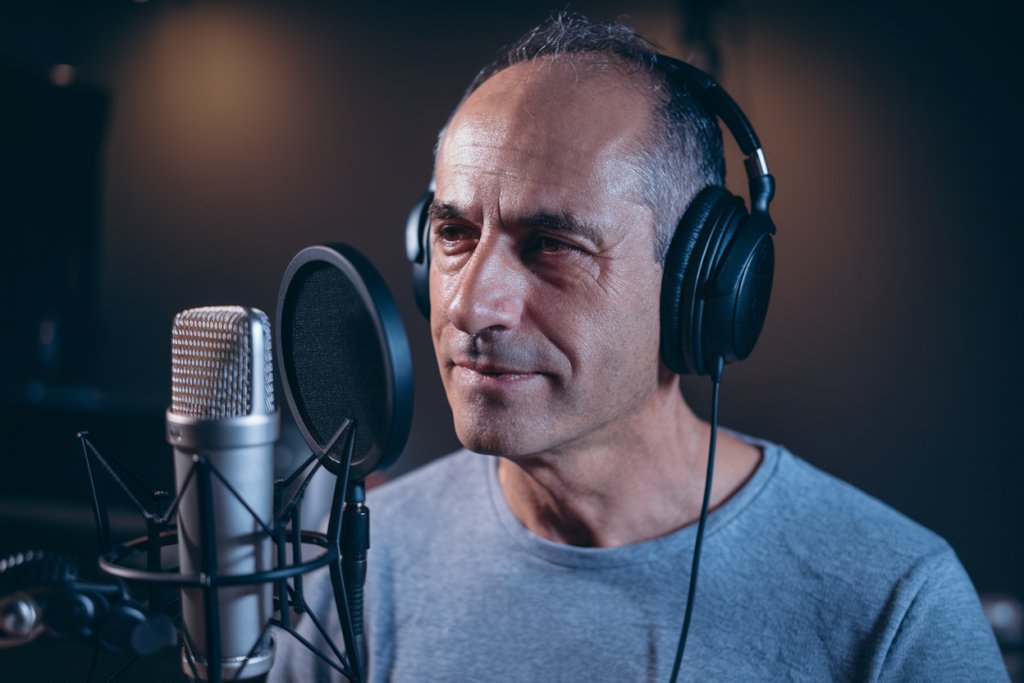When it comes to Italian dubbing, the art of voiceover transforms films and shows into captivating experiences. I’ve always been fascinated by how a well-executed dub can breathe new life into a story, making it accessible to broader audiences. The nuances of language and cultural expressions are crucial in this process, so understanding the best approaches is essential.
Best Methods of Italian Dubbing
Italian dubbing involves several methods that enhance the overall quality and effectiveness of voiceover work. Here are the most recognized techniques:
- Direct Translation
Direct translation maintains the original script’s meaning while adapting cultural references. This method requires a deep understanding of both languages to ensure accuracy. - Adaptation
Adaptation focuses on modifying dialogue to fit cultural contexts better. This approach often involves rephrasing lines or changing idiomatic expressions for clarity and relatability. - Voice Matching
Voice matching ensures that the dubbed voices closely resemble the original actors’ tones and styles. Skilled voice actors analyze the emotional nuances and delivery, creating a seamless experience for viewers. - Lip Syncing
Lip syncing aligns spoken words with mouth movements in visual media, crucial for maintaining realism in animated films or live-action shows. Precise timing enhances viewer immersion. - Casting Experienced Voice Actors
Casting experienced voice actors significantly impacts dubbing quality. Professional actors bring authenticity and emotion to characters, making them relatable to Italian audiences. - Sound Design Integration
Integrating sound design elements, such as background music and effects, complements dubbing efforts. Proper audio balance enriches storytelling by enhancing emotional engagement. - Quality Control Measures
Implementing quality control measures throughout the dubbing process ensures high standards are met consistently. Regular reviews and feedback loops help identify areas for improvement before final release.
By utilizing these methods effectively, Italian dubbing can achieve remarkable results that resonate with audiences while preserving narrative integrity.
History of Italian Dubbing
Italian dubbing has a rich history that reflects the country’s film culture and artistic evolution. Understanding its origins and development provides insight into current practices and techniques.
Early Beginnings
Dubbing in Italy began in the 1930s, primarily due to the rise of sound films. The first significant efforts occurred during the Fascist regime, where state-controlled cinema sought to promote Italian language and culture. Initial productions often featured simple translations of foreign films, lacking attention to cultural nuances. Voice actors were typically chosen based on their ability to mimic original performances without considering emotional depth or character portrayal.
Evolution Over the Years
The 1950s marked a turning point for Italian dubbing with the introduction of more sophisticated techniques. Adaptation became crucial as voice actors started interpreting characters rather than merely translating dialogue. Notably, iconic films like “La Dolce Vita” showcased new standards for voice acting, emphasizing emotional resonance and authenticity.
By the 1970s and 1980s, technological advancements improved audio quality and synchronization processes. Quality control measures emerged alongside professional training programs for voice actors, leading to a more polished final product. Today, experienced voice actors utilize methods like lip syncing and sound design integration, ensuring that dubbed content maintains narrative integrity while resonating with audiences across different cultures.
Techniques in Italian Dubbing
Italian dubbing relies on a variety of techniques that enhance the viewing experience. These methods ensure that the final product maintains narrative integrity while appealing to audiences.
Voice Acting Skills
Voice acting skills play a crucial role in Italian dubbing. Experienced voice actors must exhibit emotional range, vocal versatility, and character interpretation abilities. Actors need to connect with their characters deeply, capturing nuances that reflect cultural contexts and personality traits. Training often includes mastering accents and dialects relevant to different regions of Italy, enhancing authenticity. Effective voice acting contributes significantly to audience immersion and engagement.
Synchronization Methods
Synchronization methods are vital for achieving seamless audio-visual alignment in Italian dubbing. Lip syncing matches dialogue delivery with on-screen mouth movements, ensuring believability during performances. This technique requires precise timing and coordination between dialoguing actors and directors. Additionally, sound design integration aligns background sounds with actions on screen, creating a cohesive auditory experience. Quality control measures monitor these synchronization efforts closely, maintaining high standards throughout the dubbing process.
Challenges in Italian Dubbing
Italian dubbing faces several challenges that impact the overall quality of the final product. These include addressing cultural nuances and overcoming technical limitations.
Cultural Nuances
Cultural nuances play a significant role in Italian dubbing. Effective voice actors must grasp the subtleties of both source and target cultures to convey emotions accurately. Idiomatic expressions, humor, and regional references often require adaptation rather than direct translation. For instance, a joke that resonates with an American audience may not have the same effect on Italian viewers without careful modification. Moreover, understanding societal values and historical contexts enhances character interpretation, fostering deeper connections between audiences and dubbed content.
Technical Limitations
Technical limitations also pose challenges in Italian dubbing. Synchronization of dialogue with visual elements requires precise timing to maintain immersion. While advancements in technology have improved audio quality, inconsistencies can still arise during recording sessions or editing phases. Issues like background noise or poor acoustics can hinder voice clarity, necessitating additional post-production work for correction. Furthermore, limited budget constraints may restrict access to high-quality studios or experienced sound engineers, affecting the overall production value of dubbed works.
Notable Italian Dubbing Studios
Italian dubbing studios play a crucial role in the film and television industry, contributing to high-quality voiceovers that enhance the viewing experience. Here are some of the most notable studios shaping the landscape of Italian dubbing.
Industry Leaders
- Cinesound
Cinesound stands as one of Italy’s premier dubbing studios, known for its extensive work on international films and animated features. The studio employs skilled voice actors who excel in capturing character essence. - Mikado Film
Mikado Film specializes in dubbing foreign films into Italian with precision and artistry. Their commitment to quality ensures that emotional nuances translate effectively across languages. - Dubbing Brothers
Dubbing Brothers is recognized for its innovative approach to voiceover work, utilizing advanced technology alongside talented voice actors. They focus on mainstream cinema and popular series, ensuring broad audience appeal. - Italiana Produzioni
Italiana Produzioni has a rich history in the industry, providing professional dubbing services since the 1980s. Their expertise includes adapting scripts while maintaining cultural relevance and emotional depth. - Voci di mezzo
Voci di mezzo excels in creating authentic performances by employing experienced actors who understand regional dialects and accents, enhancing local resonance for various audiences.
- Studio Ghibli Italia
Studio Ghibli Italia focuses on bringing beloved animated films to Italian audiences through thoughtful dubbing practices that respect original works while adding local flavor. - Voice Over Italia
Voice Over Italia caters to independent projects and smaller productions by offering personalized dubbing services at competitive rates without compromising quality or creativity. - Cinecittà Dubbing
Cinecittà Dubbing operates within Rome’s iconic Cinecittà Studios, providing artistic interpretations of diverse genres with a team of dedicated professionals passionate about storytelling through voice. - Fibonacci Media Works
Fibonacci Media Works specializes in niche markets such as documentaries and educational content, ensuring clear communication while maintaining engagement through expert narration techniques. - Luca’s Voice Lab
Luca’s Voice Lab focuses on experimental projects that push creative boundaries in dubbing by collaborating with emerging artists committed to exploring new methods of vocal expression within their works.
Conclusion
Italian dubbing is an art that brings stories to life in unique ways. It’s fascinating how the right voice can transform a character’s journey and make it resonate with audiences. As I’ve explored, the techniques and dedication behind this craft are what set Italian dubbing apart.
From understanding cultural nuances to mastering technical aspects, every detail matters in creating a seamless experience for viewers. The evolution of this industry reflects both innovation and tradition, ensuring that Italian dubbing continues to thrive. Whether you’re enjoying classic films or contemporary shows, there’s no denying the impact of skilled voice actors and top-notch studios on our viewing experiences.








